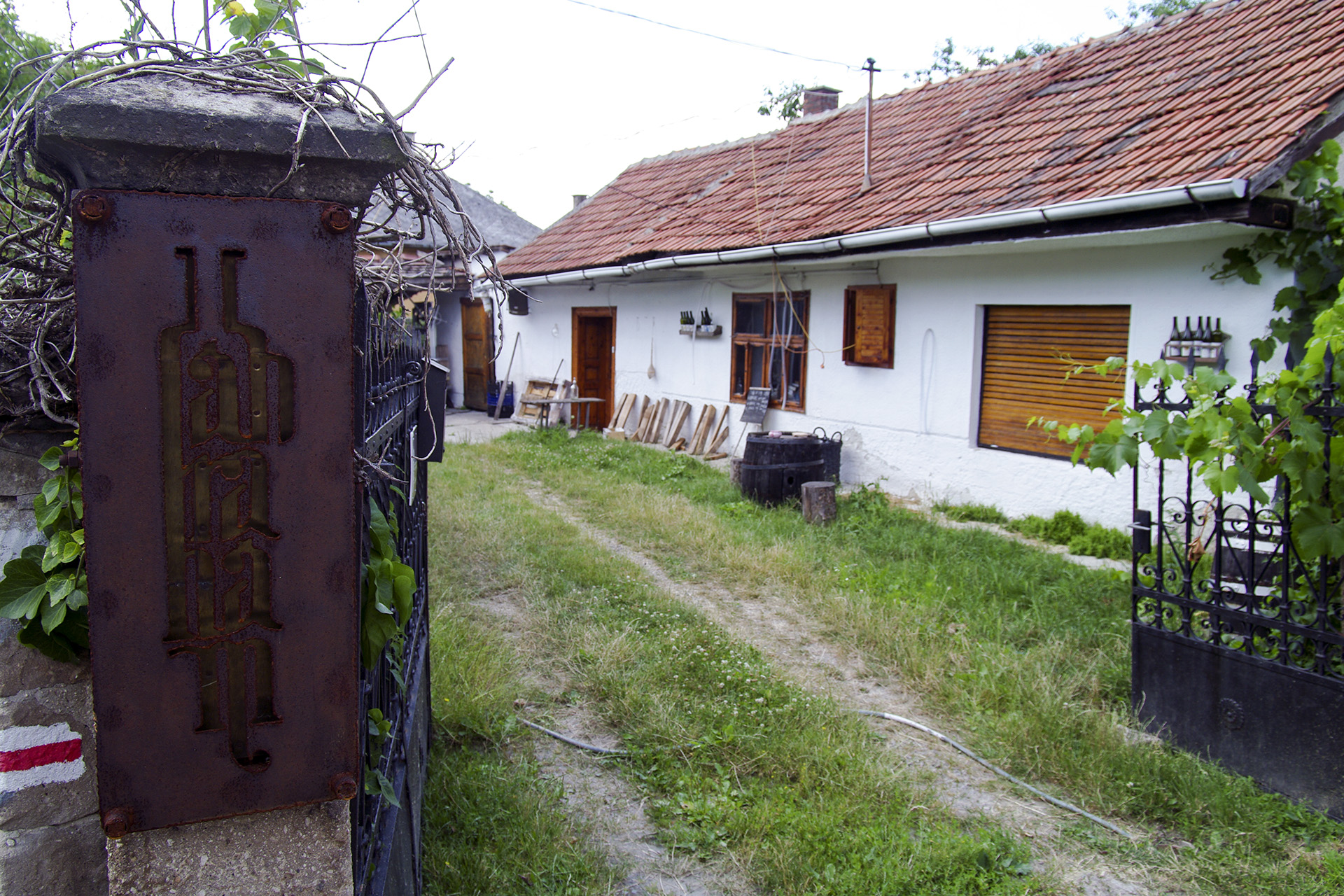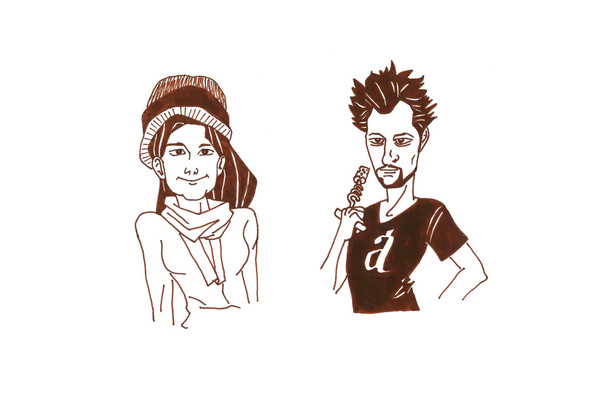You are new here? For the 1st part of this article click here.
How does this turn into a winery?
Slowly. With patience. Lots of study and even more experimentation. With lots of mistakes, wine poured away and sleepless nights. There’s no technology at Ábraham winery, nothing at all. So, Robi tries to bottle the dry Furmint with natural residual pétillance in the garage. If the fermentation stops due to the cold, he switches on the heater in the partly ruined stone cottage. He bottles the wine himself and sticks on the labels. Speaking of labels, they should find their place in our separate design series! They contain all Robi and Enikő’s crazy (in a good sense) ideas and of course the designer’s (who’s also a good friend, István Bacskai) entire creativity. They represent a completely unique line in Hegyalja, thought-provoking, full of references, multi-layered, like a Darvasi novel, like Marquez or Rushdie. Of course, all this also comes from the size. They work nine hectares, but due to the lack of money, the rather laid-back philosophy (which blends with the rock hard focus on quality), the ageing vineyards, the missing vines and the brutal spacing, as well as eschewing absorbent chemicals, insecticides and similar toxic pest controls, they only produce about 5,000 bottles per year. If something doesn’t work out as they planned, they sell it as bulk wine; they don’t put the Ábrahám name on just everything. (If you are surprised by the number of bottles, I’d like to point out that they make this amount from 12,000 vines.)
Well, slowly we’re coming to the wines too! What you need to know about Robi’s taste is that he has an extremely high tolerance for acidity. No, that’s putting it mildly. He is someone for whom Wachau Rieslings are too flabby. So, he likes taut, elegant, razor-sharp wines and does his best to make wines like this too. If however he doesn’t succeed, then the opposite, to be more precise the acidity remains here too, but maybe complemented by new wood and lean minerality. So not only his way of thinking but also the wines differ from the mainstream. Whoever I’ve spoken to about them also recalls how their wines are divisive. However it’s precisely this that turned them into fans too! Sometimes you have to make a serious diversion from the usual to be noticed. According to one Hungarian wine blogger (Gergely Ripka, who wrote the Tokaj Guide), their wines are extravagant and stand out from their peers. He rather liked the Re-serve 2012 when he visited them, whereas Darrel Joseph found it difficult to get past the first bounty given by the terroir, when their aszús also rolled a six (5q essence, what kind of name is that for a 6p aszú?), which he compared with such big names as István Szepsy or Disznókő.

Pricing, summer festival and other goodies
Let’s consider the following sequence: 195, 520, 515, 443, 237, 149, 308, 190, 355, 299, 236, 600, 350. Well, what are you thinking about now? What might the rule be? What’s the next number? Relax, it’s not a maths lesson, just Ábrahám winery’s number of wines for the last few years. The peak was 600 bottles; the average however comes out at 338 bottles for each type of wine. Artisanship is also coming to life as an old-new concept for them, as mechanisation is close to zero; they do almost everything themselves in the winery, so the minimum number of bottles is also combined with the maximum of manual labour, which doesn’t come cheap. Everybody already knows that Tokaji aszú is incredibly labour intensive, but it’s no different for dry wines, just think about Burgundy. So, Ábrahám wines are not cheap in the context of Hungarian wines. The low number of bottles doesn’t help the wine merchants either; you can only buy their wines in a few places, in Hungary and in Poland. However, if a British or American merchant could get their hands on a few bottles, then they could sell it to their customers as a truly exclusive wine! For now, this is just a dream (who knows, perhaps a wine merchant is dreaming about this right now), so until it becomes a reality, you have no other choice but to visit them in Erdőbénye, walk among the two-hundred-year-old buildings, go out to the vineyards, to the forest, to the hillsides, have something good to eat in Gigerli, call in on the winemakers, have a good time at the annual ‘Bor, mámor, bénye’ (wine, tipsiness, Bénye) festival and talk long into the night with Robi and Enikő, the two philosophers.
For our tasting notes please click here.






